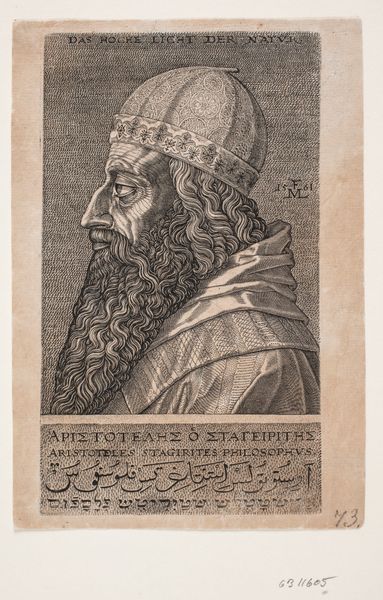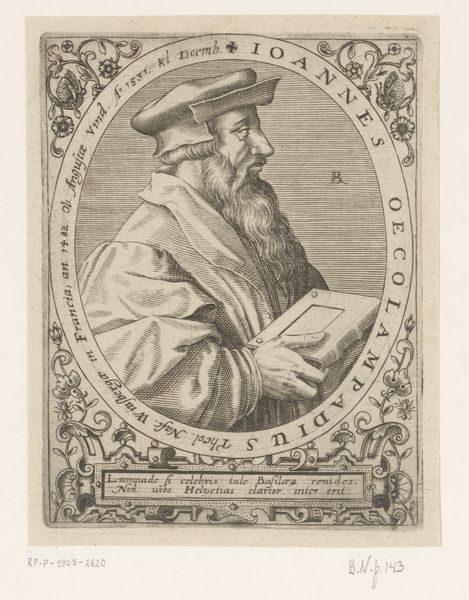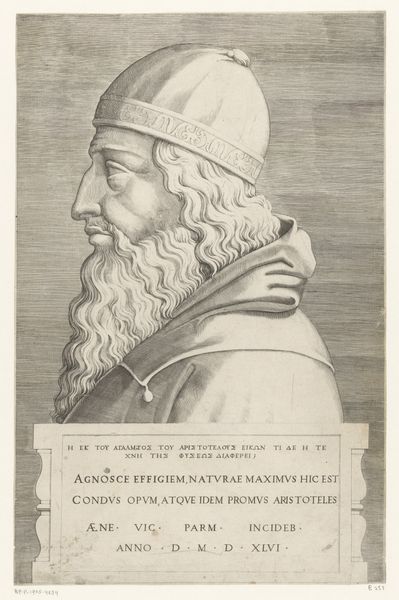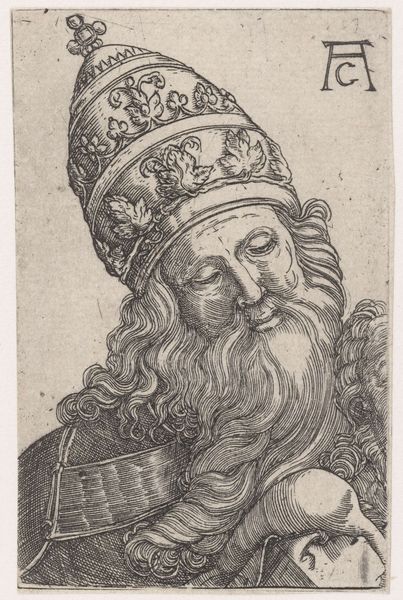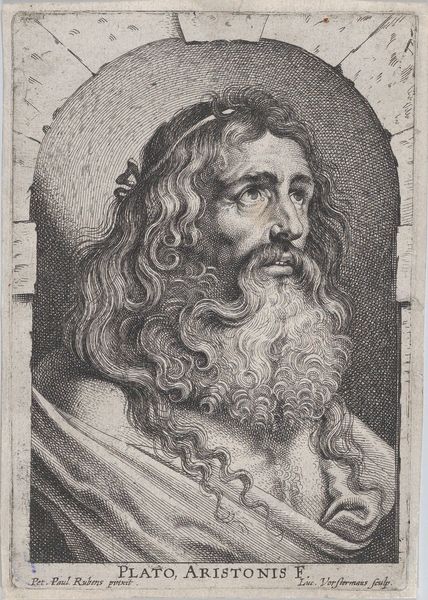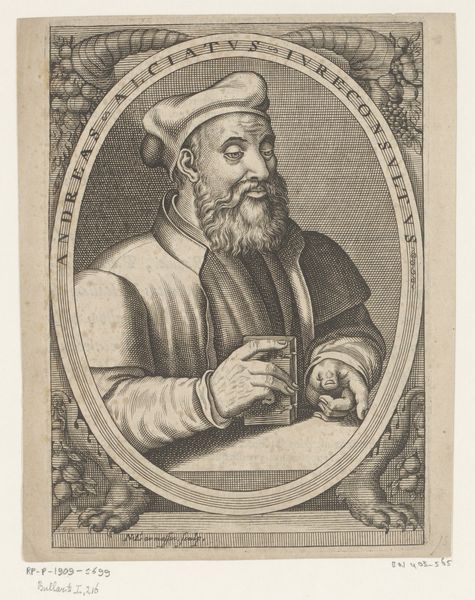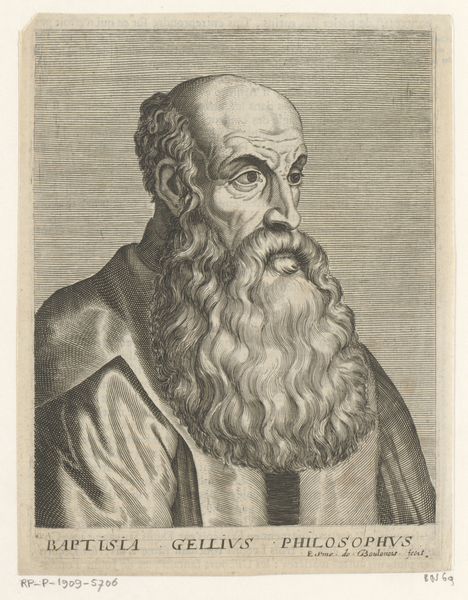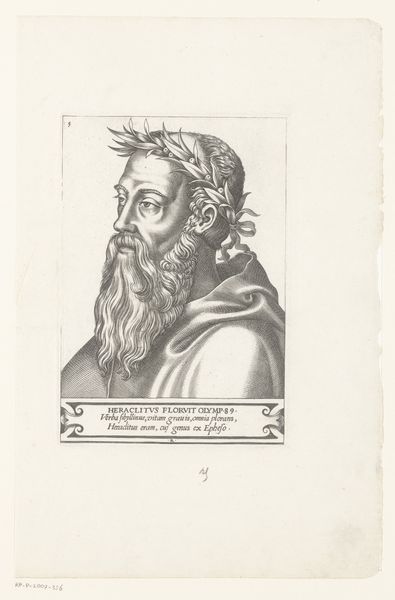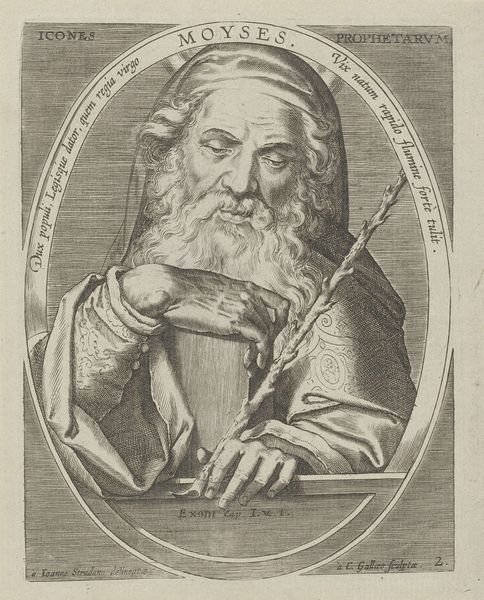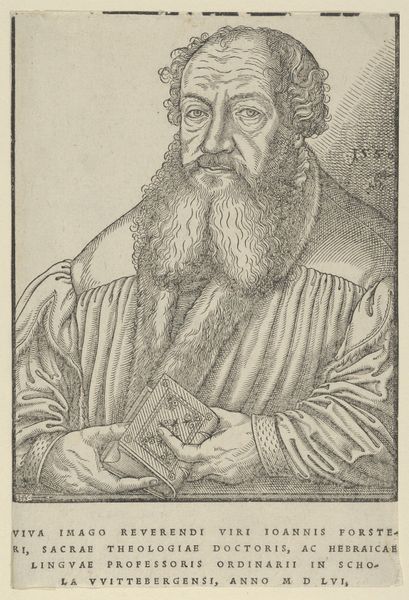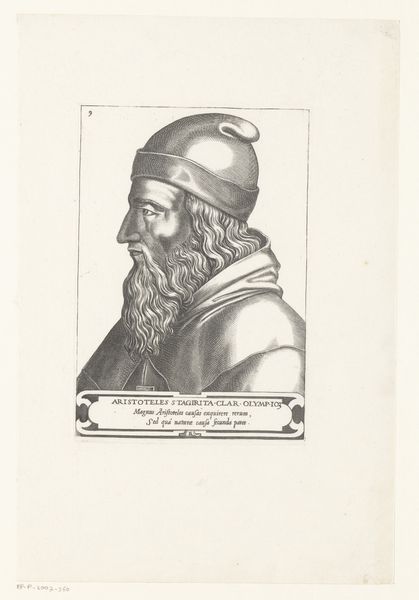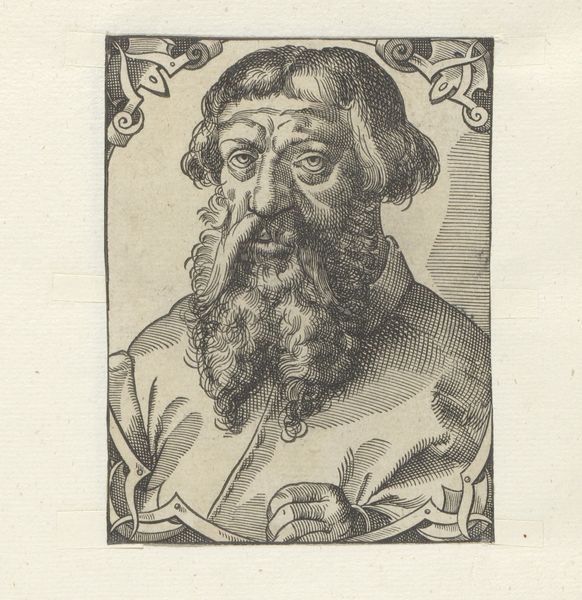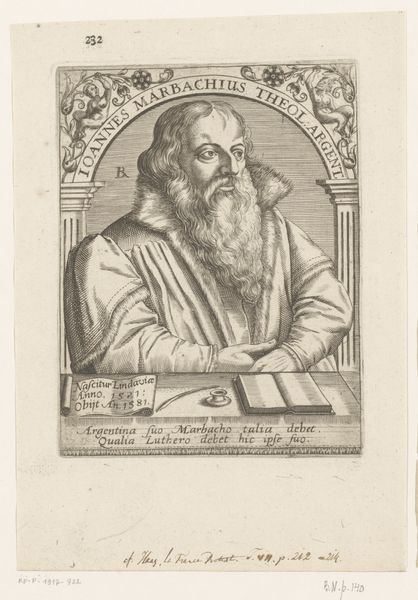
Aristotle, half lenght portrait, profile toward the left 1561
0:00
0:00
drawing, print, engraving
#
portrait
#
pencil drawn
#
drawing
# print
#
pencil drawing
#
pen-ink sketch
#
line
#
history-painting
#
engraving
Dimensions: 166 mm (height) x 96 mm (width) (bladmaal)
Curator: Here we have Melchior Lorck's engraving, dating from 1561, entitled "Aristotle, half length portrait, profile toward the left," now residing in the collection of the Statens Museum for Kunst. Editor: Immediately striking. It's a potent image of perceived wisdom and experience, rendered in sharp, almost austere lines. The density of the linework really draws the eye to Aristotle's intense gaze and elaborate beard. It projects an image of intellectual authority. Curator: The work exemplifies Lorck's interest in historical and philosophical figures. Consider the context: in the 16th century, Aristotle remained a towering figure, his writings central to education and political thought. Reproducing images like this reinforced his intellectual importance, didn’t it? Editor: Absolutely. The deliberate use of line contributes to the perceived dignity. And yet, doesn't the ornate headdress seem… unusual for an Aristotelian portrait? I wonder about the implications of visualizing an ancient Greek philosopher in such embellished attire. Curator: Interesting point. It highlights how representations of historical figures are shaped by the cultural context of the artist. Lorck, active during the Renaissance, was likely influenced by contemporary trends and understandings of ancient figures. Maybe he aimed to visually bridge the ancient and modern worlds. Editor: Perhaps, and the inclusion of text in Greek, Latin, and even what appears to be Arabic, beneath the portrait certainly indicates a desire for broad scholarly appeal and perhaps a sense of intercultural dialogue in a period of rising conflict. Curator: Indeed. These portraits served didactic purposes, providing visual models of intellectual and moral excellence, which institutions and people sought to replicate. Reproductions like this would have disseminated ideas about knowledge, antiquity, and power structures. Editor: And even challenge them. Consider how artistic license and interpretations impacted historical understanding, prompting the critical discourse around Aristotle's own problematic views on slavery and other social hierarchies. Curator: A powerful reminder that even idealized images exist within larger social, political, and theoretical conversations. Thank you for bringing those connections into view. Editor: It's in such layered discussions that art history truly serves as a vital bridge to our present.
Comments
No comments
Be the first to comment and join the conversation on the ultimate creative platform.
